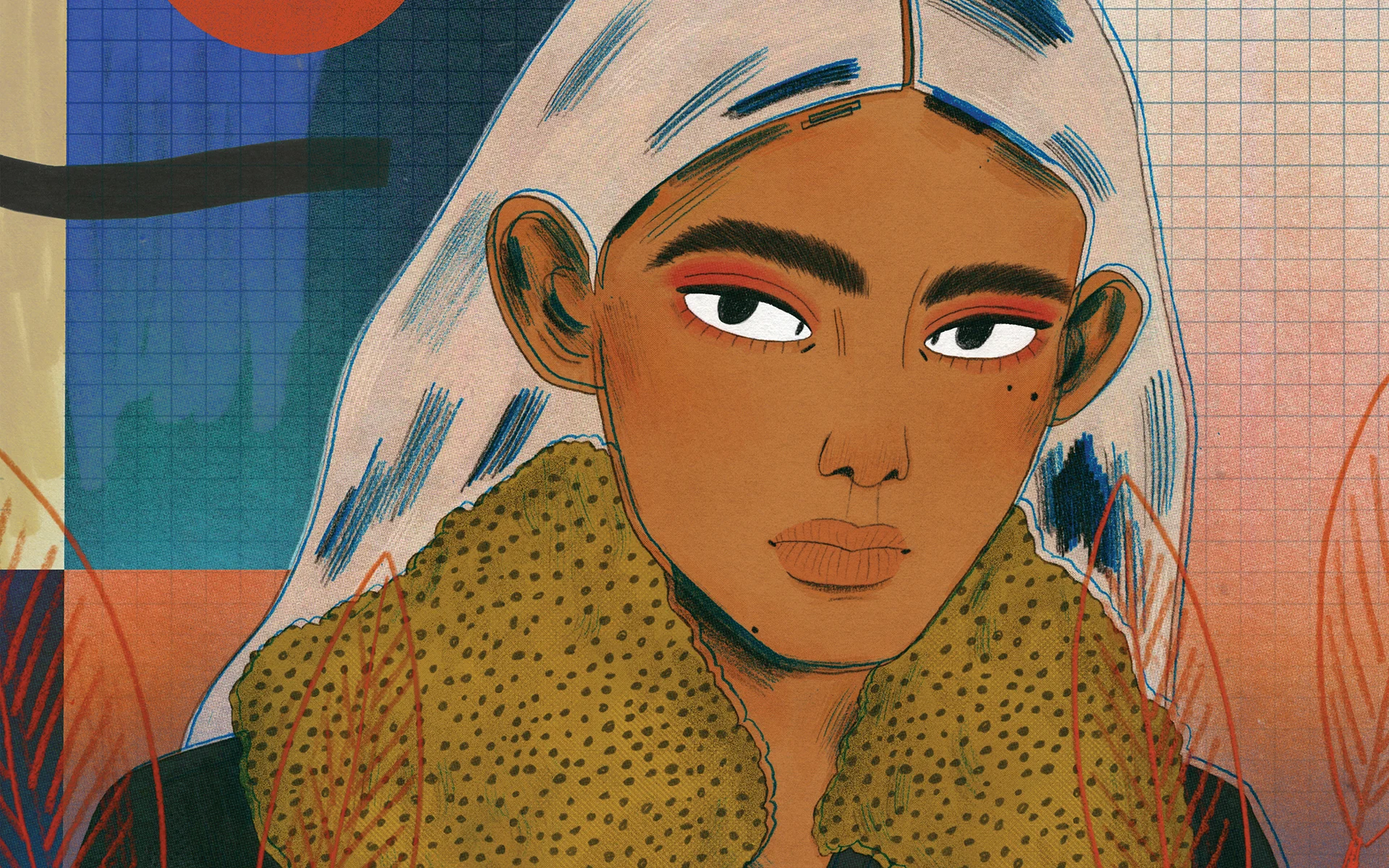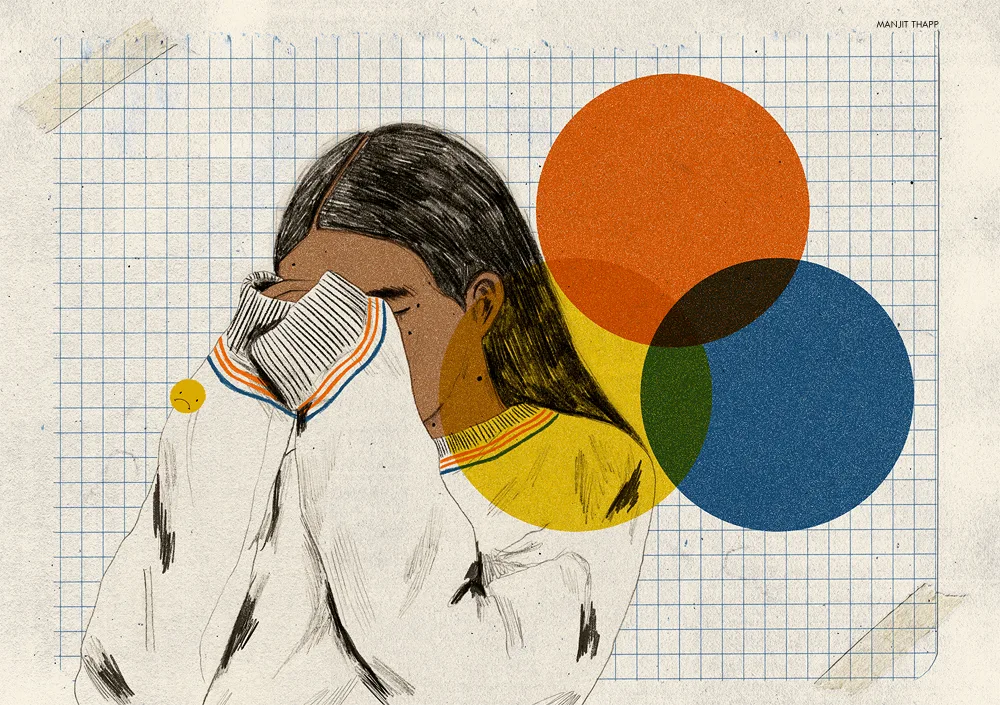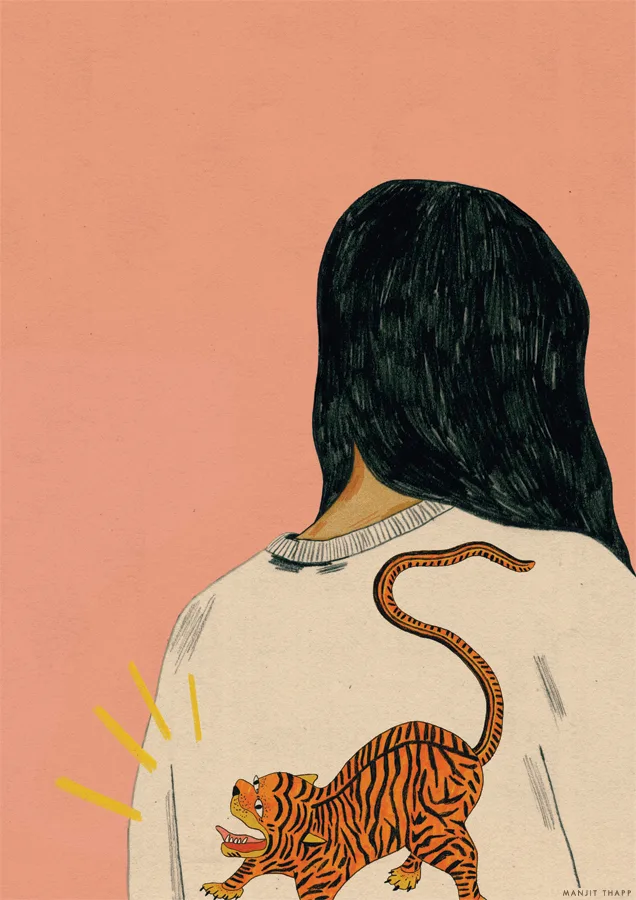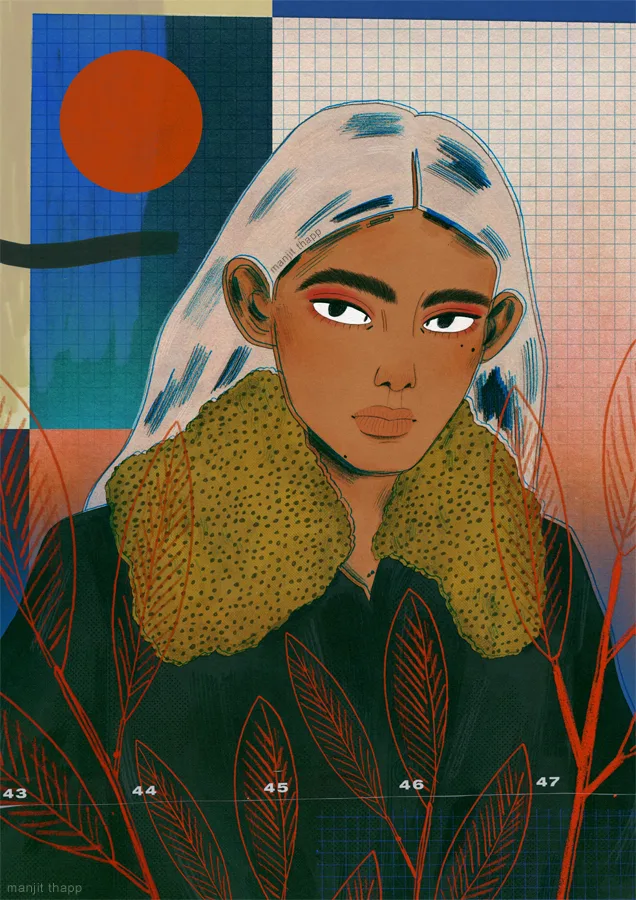

Margot from The Royal Tenenbaums, fashion models showing off their clothes or a spellbook for young witches, Manjit Thapp’s wide-ranging illustrations revolve around strong women.
“I like to create work that has emotion and feeling, and this is channeled through female characters,” Manjit says. Some of her girls stare fiercely at you, others look shyly away, but they all have an air of mystery about them.

The London-based creative has an impressive resume, having worked with Adobe, Refinery29 and Elle UK amongst others. She turns her hand to an amazing array of jobs – she documents fashion shows, makes portraits and has recently dived into the world of film, comics and zines.
Away from her commissioned work, she explores her own interests in a series of quirky self-initiated projects, such as a zine featuring the women in Wes Anderson’s movies. “I’m a big Wes Anderson fan and have always wanted to redraw some of my favorite scenes so I made it a personal project earlier in the year. It was so much fun making those sets of drawings.”

But whereas we are used to books, films or comics having a clear narrative, with a beginning and an end, Manjit doesn’t play by those rules. “I love creating a sense of narrative in my work but I’m very rarely telling a specific story,” she says. “It’s more about illustrating a certain feeling or atmosphere and I like to leave it quite open to interpretation for the viewer.”
For instance, she illustrated Silent Comic, in which we only see a female character, but no written text. It’s up to you to figure out the storyline through the drawings.

But even though the illustrations don’t necessarily tell you a story, through her work, Manjit definitely does say something about our society and the representation of girls in the media.
“Often in older works, women are portrayed in an unrealistic way. It also feels like we only see one certain type of woman,” she says.
“I love how this is getting turned on its head by contemporary artists, Polly Nor comes to mind especially. It’s important to show a wide range of women in art because that reflects the real world.”


